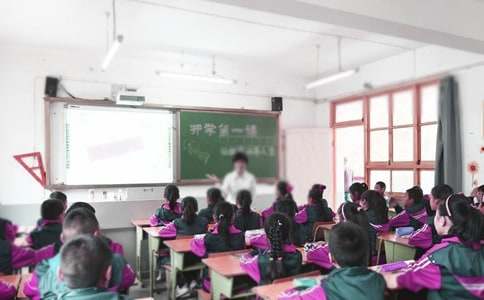开学第一课观后感
看完一部作品后,这次观看让你有什么领悟呢?是时候抽出时间写写观后感了。你想知道观后感怎么写吗?下面是小编为大家整理的开学第一课观后感,欢迎阅读,希望大家能够喜欢。

“同学们,你们知道甲骨文是什么时候的人使用的文字吗?”随着主持人的一个提问,2017年秋季开学第一课拉开了序幕。
“ Classmates, do you know when oracle bone script was used by people? ” With a question from the host, the first lesson of the 2017 autumn semester began.
这一期的“开学第一课”是以“中华骄傲”为主题,介绍了我们中华民族的传统文化—其中之一就是汉字。
This issue's; First Class of School; It is based on '; Pride of China; As the theme, it introduced the traditional culture of our Chinese nation; One of them is Chinese characters.
这一提问立刻激起了我的好奇心,我查了一下资料,原来最早的文字出现在公元前14世纪的商朝,是刻在龟甲上和兽骨上的古老文字。在古代,国王在做任何事情之前都要占卜,甲骨就是占卜时的工具。巫师把自己的名字、日期、要问的问题都刻在上面,经过占卜应验之后,这些刻有卜辞的甲骨就被保存下来了。
This question immediately aroused my curiosity. I looked up the information and found that the earliest written characters appeared in the Shang Dynasty in the 14th century BC, which were ancient characters carved on turtle shells and animal bones. In ancient times, kings used divination before doing anything, and oracle bones were the tools for divination. The wizard engraved his name, date, and questions on it, and after divination, these oracle bones with inscriptions were preserved.
汉字是一种奇妙的字符——横、竖、撇、捺……每个笔画都有它的独特之处。“竖”像站岗的士兵一样挺立着;“点”似调皮的精灵,落到不同的字上,就会产生不同的变化;“撇”如轻轻拂动着的衣袖,画出优美的弧线。不同的笔画组成不同的汉字,至今为止,汉字的数量达到了九万多个。
Chinese characters are a wonderful type of character‐ — Horizontal, vertical, slanting, and pressing; … Each stroke has its own uniqueness. “ Vertical” Standing tall like a soldier on guard; “ Click” Like mischievous elves, they will undergo different changes when placed on different characters; “ Skimming” Like gently brushing the sleeves, drawing beautiful curves. Different strokes make up different Chinese characters, and so far, the number of Chinese characters has reached over 90000.
中国自古就有“书画同源”一说,这是因为最早的文字来源就是图画,书与画好比是兄弟,密不可分。如果你够细心,就会发现至今汉字中仍有一些和图画一样的象形文字,十分生动。就拿主持人给大家举的例子——“雨”来说吧,拆开就像一朵云下飘着水滴。在大家常用的汉字里,还有很多象形字,比如“羊”字,上面的点和撇就像它的一对角;“田”字就象征着方方正正的四块庄稼地。
China has had it since ancient times; Calligraphy and painting share the same origin; It is said that this is because the earliest source of text was pictures, and books and pictures are like brothers, inseparable. If you are careful enough, you will find that there are still some pictographic characters in Chinese characters that resemble pictures, which are very vivid. Take the example given by the host to everyone -; — “ Rain” Let's talk, opening it up is like water droplets floating under a cloud. Among the commonly used Chinese characters, there are also many pictographic characters, such as“ Sheep” The dots and strokes on top of a character are like its diagonal; “ Tian” The characters symbolize four square and upright fields of crops.
汉字还教会我们做人的道理。在节目里,王宁教练给大家演示了“正”、“直”两个字的写法和由来:“正”字的下面是个“止”,表示停下了脚步,所以行不离轨就是正。而“直”呢,它的下面很像一个“目”,所以目不斜视就是“直”。
Chinese characters also teach us the principles of being a good person. In the program, Coach Wang Ning demonstrated to everyone that; True” 、 “ Straight” The writing style and origin of the two characters:“ True” Below the word is a '; Stop” It means stopping in one's tracks, so whether or not to leave the track is correct. And“ Straight” Well, underneath it looks like a '; Objective” So not looking sideways is what it means; Straight;.
就像节目里提到的“中国汉字源远流长,是唯一流传至今仍然具有生命力的古文字”。正因为这样,我们要一笔一画、横平竖直地把每个字写端正,把汉字的魅力传承下去!
As mentioned in the program, '; Chinese characters have a long history and are the only ancient writing system that has been passed down to this day and still has vitality;. That's why we need to write each character correctly, stroke by stroke, horizontally and vertically, and pass on the charm of Chinese characters!
【开学第一课观后感】相关文章:
开学第一课观后感:《开学第一课》03-19
开学第一课08-24
《开学第一课》观后感-观后感06-22
开学第一课观后感观后感12-11
开学第一课说课稿12-13
(精选)《开学第一课》观后感12-20
(精选)开学第一课观后感09-23
《开学第一课》观后感02-03
开学第一课观后感02-24
开学第一课的观后感02-28